#cross-section
Photo
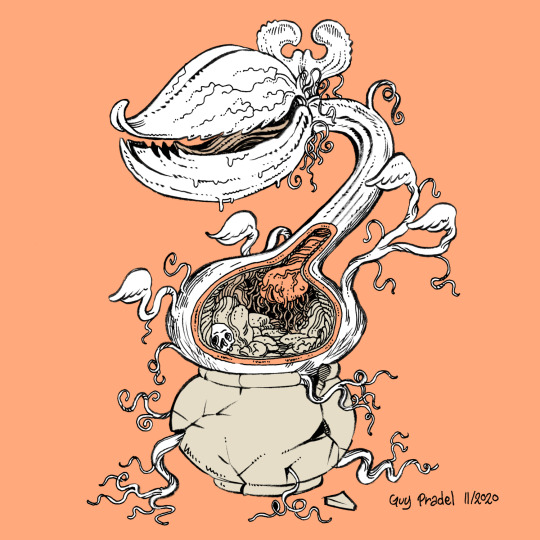


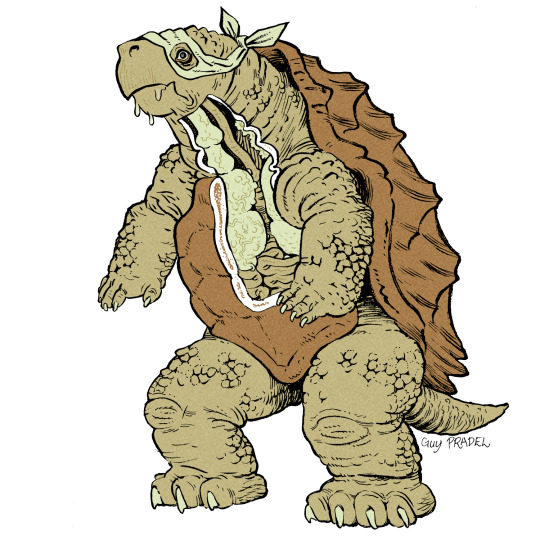
Four monsters cutaways I drew a rewards for the bakers of the second issue of Stomped.
Stomped is published by Ross Radke.
In order of appearance : Audrey II, Willis O'Brien’s King Kong, Ray Harryhausen's Kraken, and a teenage Gamera.
#Stomped#monsters#Willis O'Brien#Ray Harryhausen#Audrey II#Gamera#Kraken#cutaway#cross-section#king kong#monstre#Drawing#dessin#Guy Pradel
127 notes
·
View notes
Text

Mandalorian - Nevarro Cantina cross-section illustration by Maxdwork
7 notes
·
View notes
Text
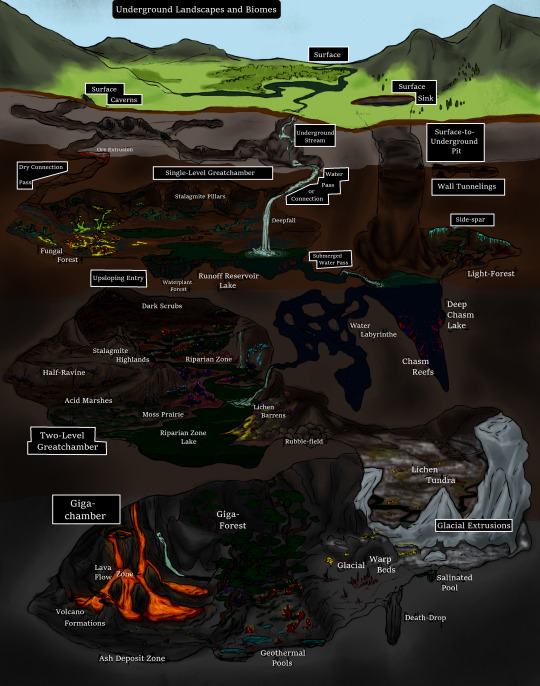
Underground Landscapes and Biomes
To flesh out the grand underside of Ancardia's world, and to emphasize that, rather unlike the standard "big underground area" of fantasy worlds, this Underground is rich with biomass and potential for life--though the life there is very different from that of the Surface. A sample cross-section map of the way the Underground's world is laid out is presented here, with distinctive types of landforms/chamber structures and biomes labelled. I'll start describing from the top-down:
The Surface
The surface of the world, with all its more familiar sorts of deserts, forests, shores and mountains. The Surface technically counts even those caverns of surface-types, even if they lead to passages that access the Underground, meaning the definition of "Surface" includes from the highest mountain top to the deepest ocean trench, as well as every cave or tunnel up to 100 meters below their openings.
Surface Caverns
The more familiar sort of cave that Surface-dwellers would know. Surface caverns can be small cul-de-sacs formed by volcanic activity, wind, or most commonly running water, or vast labyrinthine networks that stretch on for miles. Most are openings formed of hollows in bare rock--light is generally minimal as bio-luminescent organisms are both rare and scarce in this relative desert. Still, these caves do support some life, including a few species which colonize upwards from the Underground such as the Depthmoss lichens and a few small fungi, but most life here consists of small blind fishes and salamanders, insects like crickets, roaches, and springtails, a legion of bat species which only use such places for shelter, and a number of other incidental Surface animals who shelter or den in caves but spend most of their lives outside of them, such as bears, pigeons, gremlins, wolves, packrats and a number of lizards and snakes. Many humanoids also use these caves for habitation, such as the Parrgeg Troll tribes, orders of Druids of Ulderon or of Valas, and all manner of rangers and hunters. Surface Caverns generally max out in height at around 60 meters, and total chamber length or width at 200 meters. Most are far smaller.
Underground Streams
Whether they resurface at some point or not, these intrusions of Surface water into the caves form much of the basis for the ecosystems below for two reasons: Water seep resulting in the abundant fresh water supplies in many areas of the Underground, and as a means for the ancient ancestors of many animals, alga, fungi and plants that adapted to this underworld. Those that bore through soft areas and end up directly in the Underground are often distinguishable by the distinct lack of weak-swimming animal life in them, and will often include only minimal freshwater sponges, suction-cup minnows, and speedier blind eels.
Surface Sink
Sinkholes are not unheard of in Ancardia, but a Surface Sink is a grade above. These land forms are often back-filled with rubble, sand, and especially glacial debris, but this layer of ground forming the basin is seldom very stable, and any intensive digging, building, or even severe weather can result in smaller sinkholes opening up and giving way completely into Surface-to-Underground Pits. These generally range in diameter from 20 meters to 100 meters, and the layer of the clogging debris is generally between 10 and 25 meters thick only.
Surface-to-Underground Pit
These structures are astoundingly dangerous (including the unstable Sinks that cover them up) and can drop vertically down into the Underground levels for over 300 meters straight down. While ledges can exist along the sides of these gaping holes in the earth, many known to exist are actually very smooth-sided due to their formation being glacial in origin. Some of these periodically remain open to the Surface for decades to centuries at a time, introducing shafts of sunlight down into the area below and making these areas some of the brightest-lit in all the Underground. The largest known pit of this type as of the late 14th Age exists in part of the Northwest Drakalors, directly overtop of the Gnumian city of Edipato and its surrounding countryside--this pit extends for 780 meters from the mountainous elevations and the opening itself is about 137 meters in diameter, producing a shaft of sunlight that supports a number of Surface moss species amongst the Underground natives.
Dry Connection or Pass
A Dry Connection, or a Dry Pass, is a tunnel structure of any shape and size that resembles a Surface cave, but notably connects Surface Caverns to a level of the Underground, or a higher level to one along a lower plane. These tunnels contain minimal bodies of water, usually only small pools formed of condensation or small springs seeping into crevices, and the life within these is still fairly scarce, but consists of many more species of Underground lichens, insects, mosses and hardier fungi such as the Dazal'gulr puffball. Sometimes Surface species of rodents or bats may make it down into these tunnels, but usually do not stay long.
Water Connection or Pass
Similar to the Dry Connections, these passages between Surface and Underground are narrower tunnels or tunnel networks. The main exception is that the Water Connection is primarily defined by a Surface waterway descending through softened limestone layers, though generally not completely filled with water. Sometimes Water Connections will become Dry Connections over time as a result of shifting watercourses on the Surface, and in most cases these subterranean rivers are hazardous to navigate due to the substantial current and vertical drops on their way to other water bodies.
Single-Level Greatchambers
The most basic type of Greatchamber, those of the single-level sort make up over one third of the space within the Underground, and are usually connected to several other similar chambers by dry or water connections or to an even larger one. The term "single-level" refers to the average ceiling height and the absence of high escarpments or deep chasms splitting a chamber into multiple levels. These greatchambers range in ceiling height from 100 meters to 250 meters, and are usually several dozen kilometers in at least one other dimension. Chambers this large are capable of generating their own low cloud systems, wind currents, and if separated from other chambers by a narrow enough passage, these weather conditions can be isolated to single areas and differ dramatically from their neighbors.
Wall Tunnelings
Wall Tunnelings are small pockets or caverns excavated by natural forces, creatures, or sometimes as mines or sheltered areas by humanoid beings, notable in that they essentially form a cave within a cave, and offer respites from the weather that exists in the Underground as well as from wild creatures and natural lighting. Many cultures choose to make their infrastructure and homes using wall tunnelings rather than constructing places in the open chambers--these generally include the Murruk Trolls, Minotaurs, some Dwarven groups, and the Underground's Ogres.
Deepfall
A deepfall is a particular type of waterfall existing only in the Underground, defined as one where a running stream or river plunges from one layer of the Underground (or from the Surface Caverns) directly down the full height of a chamber into its destination. Deepfalls frequently generated very turbulent currents and misting around where they make contact with the lakes, rivers, and pools they feed into, and the depth of the lake or river bottom is often deformed into a deadly pit many meters deeper than the surrounding water, almost always full of powerful cycling currents that transform it into a body-trap. Creatures that live in these pits are limited to certain species of freshwater mussels and other sessile invertebrates, or large predators/scavengers capable of immense grip on the bottom surface.
Stalagmite Pillars
These landforms are usually found on the top of natural rises, with many of the stalagmites meeting the stalactites forming from water seep in the ceiling and combining into massive sloping structures. Cracks and crevices along the vertical surfaces of these structures are the typical denning areas of Slypha, a species of large predatory animals closely related to bats, and a number of lichens, mosses, and fungi are specifically known to favor the height and the airflow when growing high up on the pillars. Dark Elves are known to use these stalagmites and the larger pillars as central anchors for their larger buildings and towers, drilling into the pillar itself and building the levels of the edifice around it in a circular pattern of outward-facing rooms.
Fungal Forest
A very common biome found in all levels of the Underground--teeming with dozens of species of fungi, lichens, and also a variety of understory and forest floor plants that live entirely (or almost entirely) off of the light produced by most other species found here. Supported by the fungi, a great many kinds of insects, arachnids, molluscs, and other animals can be found in these places as well, though megafauna is more limited by the thickly-vegetated areas and tougher, fibrous stalks of fungal trees blocking the larger creatures entry into all areas. Giant wolf spiders, Dire Flatback millipedes, greatrats, greatbats, dire violet rove beetles, cave-lions, dire ants, aegiszarl and a host of other creatures are common under the canopy of the mushrooms. For this biome to form, it generally requires a lowland zone of relatively high humidity and generally little to no acidic content in the soil layer.
Runoff Reservoir Lakes
These bodies of water are still, generally with no current whatsoever and not contributing to any streams or rivers, and are fed from deepfalls or more ordinary waterfalls and seeps from the level above. Their stillness contributes to a great deal of aquatic plant life in these lakes, which in turn support a succession of tiny, small, moderate and even some very large animals.
Waterplant Forests
While most common in runoff reservoir lakes, these thick growths of numerous aquatic plant species and their subsequent animal communities can take root in any still or slow waterway. The largest plants are the Deep-lilypads, whose dark magenta leaves can stretch upwards from their roots over 4 meters and the pad itself be over a meter wide. Large varieties of edible plants and alga grow in abundance in the shallows and on the shores, making these common habitats to find grazing Deepwater rats, Deepmara, and a number of millipede, beetle, and other herbivorous creatures, as well as the predators that hunt them.
Submerged Water Connections
These are passages that connect chambers or entire layers of the Underground together through bodies of water, leaving them water-filled tunnels that aquatic creatures often use to migrate between regions. The fauna in these submerged passes are usually highly bio-luminescent, and generally consist of mussels, hydra, moss-animal colonies, sponges, colony algae, and a number of small crustaceans and fishes. Larger semi-aquatic animals also use these passages, most notably dire waterscorpion and cave fishers while hunting for the smaller creatures.
Water Labyrinths
Naturally-occurring networks of winding, honeycombed passages interspersed with small rooms, water labyrinths are uncommon structures in the Underground and generally regarded with fear. Even among the most adventurous and inquisitive societies dwelling in this subterranean land have not fully mapped out the ones that have been discovered, and of expeditions that have ventured into known entrances, only half are known to have come back alive. Even the usually quite confident and skilled Draulfyn gem-divers and their tame cave fishers regard trying to search water labyrinths as crazy. Many of the Underground’s fish species are known to traverse these places, as well as many water insects and crustaceans, but very little of the sessile life has natural bio-luminescence, making these passages one of the darkest places down here.
Deep Chasm Lake
Formed from deep fissures with vertical or nearly-vertical walls, these lakes are rare phenomena but several are known to exist in the middle layer and the deepest layer of the Underground, some with an ordinary lake flooding the area slightly above the chasm and disguising its true depth. These lakes can descend to over 500 meters deep, and the deepest of which is yet to be fully and accurately measured. The waters of these lakes are often a stable if chilly temperature, and below the 200 meter mark they generally include a dense layering of more brackish salinity, along with a whole new range of aquatic life adapted for such saltwater.
Side-Spar
These are rather large cavities form either partway up the walls of a much larger chamber, or formed in the side of a surface-to-underground pit. While smaller than the proper greatchambers, they still accumulate biomass in a similar way and support microbiomes within. One well-known side-spar zone exists on the upper layer, close to Dwarven territory, cut 40 meters up the walls of a high chamber and extending 100 meters into the rock base, with a thick region of Dark Scrub and Lichen Barrens filling it and supporting a large population of Dorn Beasts, which prefer the isolated location for brooding their vulnerable young.
Chasm Reefs
In Deep Chasm Lakes, the fauna and flora differ strongly from those of other types of lakes in the Underground. Clinging to the walls, the creatures developing communities near and below the brackish zones are often bio-luminescent, and consist of moss-animals, hydras, red alga, sponges, frilled clams, tubeworms, and pit-maggots (a species of larviform giant caddisfly). Swimming freely are a number of unique freshwater jellyfish, isopods, unusual fish, and waterworms. While there is some overlap in the pelagic species between the more common lakes and the Chasm Reefs (especially in the waterworms and jellyfish), most others are found nowhere else.
Upsloping Entry
A structure that occurs when two greatchambers from two different layers connect directly together through a wide chamber-sized passage, usually with little shifts in local climate but still very much vegetated and full of wildlife as each greatchamber. The change in elevation can be gradual, or involve several steep cliffs, but usually the altitude change is roughly 150 meters.
Two-Level Greatchamber
The vast majority of the upper layer of the Underground is made up of many of such interconnected greatchambers—containing within them either significant hollow escarpments which create yet another sublayer atop the main ground level, or deep canyon and ravines that open out to deeper sublayers in the form of bowl valleys. Intensive tunneling and road-building by several dominant societies in the Underground renders these sheer climbs and drops much more navigable, but in areas of total wilderness rock climbing experience is recommended for traveling at all between the sublayers.
Dark Scrub
This is a biome consisting largely of drier climates of the Underground, and generally lacks most of the signature fungus species. The plants are also generally those which generate little to no bio-luminescence, and are adapted to be chemosynthetic organisms which feed on a mixture of carbon dioxide and mineral content absorbed by the root systems. Many of the plants living here are highly toxic, and any herbivores living in dark scrub are those adapted to be resistant or immune to plant poisons, such as the Runda Beetle and the blind Deeps Greatrat. Carnivorous creatures found in greater numbers include the Silky Crown Centipede, the Dire Grub-owlfly, and the Ramidreju.
Stalagmite Highland
Highlands are common in the landscape of the Underground, though Stalagmite Highlands are a bit more unusual due to being built up by natural moisture seep, creating sleek limestone formations over the granite and basalt of the normal outcroppings. Due to their origin, most of these regions will be laced with small springs, cataract systems of small waterfalls, and fast-moving creeks which host a number of small water life and support a number of animals, plants and fungi on the rocky substrate. Wherever soil can collect, common dark nettles, glass milkcaps, bloody mycenas and full-moon morning glories grow in clusters, and Wolpertingers are known to den in cavities they excise into the softer spots. Hy’izhur Rats, known for their jaw strength and aggression, are also more common in these places.
Half-Ravine
A half-ravine is a curious landform where one side of a canyon partially erodes, leaving one side much higher and steeper than the other. The cavities that form in the tall side are commonly anchors for the Devil’s Rose plant, and premium roosting sites for the numerous species of greatbats and denning areas for wild Javunwalla. The low side conversely offers a sandy, rocky terrain preferred by Dire Scorpion, Burbroot, Demon Daisy and a number of burrowing rodents and insects.
Acid Marsh
A common form of wetland in the Underground, these marshes form in areas close to erosion of various sulfur-containing rocks, raising the soil and water’s Ph to a range of 5.5 to 6. Species of fungi that grow here are adapted to be tough and wood-like, resembling medium-sized branching shrubs (these are thought to be descended from Surface coral mushrooms), and the plantlife that flourishes is that specifically preferring plentiful water and acidity—with no fewer than 100 species of mosses alone, as well as sundews, nettles, arums, willows, and wild celery adapted to the Underground. The verges of these biomes are thought to be the origins of the dark elves’ first successes in breeding tomato, carrot, and potato plants which could thrive in the climates of Ancardia’s underground realm.
Riparian Zones
Forming large portions of the lowlands in all levels of the Underground, the rivers that criss-cross each layer draw about them an abundance of biomass, soil deposits, and wildlife of all kinds. With few exceptions, most of the well-known species of animals, plants, and fungi of the Underground can be found at least as some times in riparian zones. Most of the peoples of the Underground, when roads are either inconvenient to build or not available, depend on these networks of rivers for travel using barges and rowing vessels, and due to the richness of these areas, many settlements were situated within these biomes, or at least adjacent to them. Megafauna are also commonly known to migrate through these zones due to their water needs, and include Urkklerats, Titan Giraffe-Beetles, Ztsadri (steed-spiders), Dorn Beasts, Cave Bears and Cave Tigers.
Moss Prairie
Another common biome which supports high levels of life is the moss prairie, where thick gravelly silt mixtures become colonized by about 45 species of moss, 12 species of tall lichen, 14 species of mushrooms which form luminous fairy rings, and 20 species of various other low-growing plants. Moss of Mareilon is famously known to grow in greater abundance here, and grazing on the various plants and fungus are herds of animals like Dire Mole Rats, Deepmara, the wild Riding lizards and Wolkangis.
Riparian Zone Lake
Lakes form along Riparian Zones in the Underground very commonly, and can be expected to be up to 30 meters deep at the most, sometimes spanning multiple kilometers in one or more direction, and supporting a huge variety of aquatic crustaceans, molluscs, insects and fishes. The largest known fish species in the Underground, the Colossal Eel, typically lives in the deepest parts of these lakes, hunting low-flying and surface-swimming animals, but these huge creatures (topping out at 7 meters in total length, with a body diameter of 1.5 meters) spawn in the rivers joining these lakes. There are few societies in proximity to one of these lakes that do not cultivate a strong fishing and shellfish-diving industry, with the only exceptions being the Murruk Trolls, Minotaurs, and the Gnoll tribes. Even so, Minotaurs are known to barter for the many species of alga that form mats atop the surfaces, using them as prime fertilizer and mineralizer for their crops. Islands or peninsulas situated within these lakes are commonly regarded as ideal locations for keeps and developed cities, and many of the greatest cities such as Evrethrdral, M’zonathrl, Itsati-Hob, Stronung and Thundigh are located in such a place.
Lichen Barrens
Common on areas with steeper slopes and in the rainshadows of higher or broader regions of a greatchamber, the Lichen Barren is usually quite treacherous and rocky, splashed with colonies of no fewer than 150 species of hardier lichens. Most of these lichens do not grow any part of themselves taller than about 3 cm, but can spread to be several meters across each, sometimes with one organism enveloping an entire boulder amongst other rocks covered by other species. Smaller insect and arachnid species thrive here, including Vuugas tarantula, fire beetle, Uqu cricket and Cave solenoid. Lightning lizards are also often known to pass through these areas along the edges, likely after insect life with somewhat less of a threat level to hunt, and if the barrens occur in an area of colder temperatures on average, Glacial Salamanders sometimes wander in to do the same.
Rubblefield
These places are those in frequent flux, places where destabilization of older soil and sandstone layers cause consistent landslides with weather episodes. Very little permanent life dwells here, but they sometimes attract Dwarven mining interests for the probability that new shifts will dislodge boulders with seams of crystal ethrite (the raw form of mythril), adamantium ore, or reveal seams of other precious materials in the rock wall that was newly exposed. In some cases, Rubblefields form over other, more ancient biomes, and between the cracks in rubble pieces some mosses, lichens and colonies of insects can be found. If they stabilize, these places often become Lichen Barrens.
Giga-Chamber
Making up more than a quarter of each layer of the Underground are what is called Giga-chambers. Much like the two types of Greatchambers, the Giga-chamber is large enough to sustain cloud formation and weather patterns, but since the size discrepancy is so great, the weather that occurs varies and increases in severity to a much greater degree. Summer lightning storms are common in Giga-chambers, which only increases their nutrient density and biodiversity. Most of the regions of Evrek and of Thwervond are comprised by several Giga-chambers directly linked together. The ceiling height of a Giga-chamber frequently exceeds 500 meters, and they very often are more than 25 kilometers in all directions.
Lichen Tundra
The Lichen Tundra is much like a mixture of the Moss Prairie and Lichen Barrens in conditions, being placed on rich soil but with vegetative life suppressed and adapted for seasonal swings due to the proximity of cold spots of arcane energy which generate the Glacial Extrusions. This is the natural habitat of the Glacial Salamander, but also has fairly numerous populations of Uqu cricket, Wolkangis, Greatrats, Dire Weta, Ochotle Light-fly, and one subspecies of the Dori Centipede. On the middle layer, a vast region of this Lichen Tundra falls within Orc territory.
Glacial Extrusions
Formed from a natural uptick in arcane energy in certain regions, these masses of ice protruding from the rock base calve off small true glaciers and produce regions of the Underground which are far colder than most. The only places where it gets cold enough to snow or have any other form of frozen precipitation in this underworld are within or adjacent to these intrusions, such as in Lichen Barrens or Glacial Warp Beds. The glaciers themselves seldom melt permanently, fluctuating with the increased temperatures of the rocks and Surface above, and if smaller glaciers do melt entirely they are often replaced by increased glacial mass dropping from the intrusion. Very little besides microorganisms live on the intrusions themselves, though Glacial Salamanders will often migrate to be nearer to them.
Salinated Pools
Pools of a volcanic vent origin in the Underground can sometimes become highly salinized by the eroded deposits of salt minerals and form a highly dense pocket of water up to 5 meters deep and 5 meters across. Very little except for some highly-specialized colony bacteria can live in such salty conditions, but the presence of these pools allows some settlements to harvest and treat this water to turn it into a form of “sea salt” without having to dig for rock salt deposits. It is extremely difficult to drown in these pools, as they are so dense, but drinking out of one by accident can have dire consequences due to both salinity and the bacteria.
Glacial Warp Beds
These are regions left behind after calved glaciers from the intrusions have melted or moved off, usually grinding at the mineral base of the rock or dragging a new layer of soil onto a scoured stone face. There are often very unusual shapes in the bedrock stone of these areas, sometimes forming alcoves that provide shelter and other times bizarre shapes that bear names based on animals or occupations they looked most like to the first few viewers. Many lichens and smaller plant and fungi live in these zones, mostly those adapted to colder temperatures, as snow and freezing rain do occur in proximity to the parent glaciers.
Death-Drop
Another formation of volcanic origin, these deep pits form when the more brittle lavarock of cooled volcanic formations wears away over time and leaves a large pinhole in the much harder substrate of the rock base. They have been recorded to have depths of up to 65 meters straight down, and are accurately named for any who slips down without any form of harness or a way to slow descent.
Giga-Forest
This form of forest is dominated by a particular tree-like organism that developed in the Underground and closest related to muscadine grape vines on the surface—the Warpwood. While warpwood vines will grow in almost any temperate or tropical temperature biome with average to high humidity and stable soil base, in the Giga-Forest almost all large plant life are exclusively made up of particularly high-climbing specimens, typically with the oldest individuals reaching from the ground level up to between 200 and 500 meters to the ceiling. These vine-like “trees” often bend and twist and wrap around each other and stalagmite structures, their stabilizing tendrils boring into stone and each other in a contest to reach the best anchoring points on the stones above. From the ground to the ceiling, myriad other life from bio-luminescent flowers and mushrooms to bat colonies to Drakotsadr spiders and dire bee-hives are supported by the iron-hard framework of these huge plants. Clawbugs and their larger, more deadly relatives the Ashitovis Bug are particularly partial to these biomes, and travelers are advised to beware also of creatures like Cave Bears, Dori Centipedes, Shi’echar moth larvas, and packs of Dire Hyena.
Geothermal Pools
In proximity to volcanic hotspots rising closer to the floor of the Underground or to the few active Lava Flow Zones in regions of the layers, Geothermal Pools of various types frequently form amongst other biomes, or in areas of bare soil and rock if the chemical composition (high sulfur or high salt content) or sheer temperature negates the growth of most life. Most pools are simply naturally-occurring ponds which are heated to a safe temperature by volcanic hotspots, and host a variety of microbial life such as copepods, diatoms and rotifers—these are attractive locations for both wildlife and humanoid cultures as naturally occurring hot baths, especially so when they crop up in cold regions near glacial intrusions. Some of these pools, however, are dangerously hot and are more utilized by rangers to boil food, as they can reach an average temperature of 210 degrees Celsius and contribute to geyser activity on the layers above or on the Surface. Some pools are not too hot to soak in, but are contaminated with various mineral salts or sulfur compounds that can burn and irritate skin—these pools are lifeless except for a few types of extremophile bacterium, though some Alchemists take interest in them for straining the active salts and chemicals out of them.
Lava Flow Zone
In certain places on each of the three layers of the Underground, pockets of upwardly-pressed magma not only form zones where geothermal pools are likely, but break through tiny weaknesses in the rock base and form hot, dry regions with layers of solidified lavarock interspersed with active and dangerous streams of lava flow. The amount and cooling of the lava in these areas is dependent largely on the rotation of Ancardia’s world, which draws the magma base down in times of low pressure and means less of the rock remains molten, and the opposite at other times. The Aggbrun, or Fire Lizards, prefer areas in certain proximity to these lava flows for incubating their nests, and the adults are well-known for traversing even the still-cooling lavarock. While dangerous, Dwarves, Kobolds, Gnolls and Ratling traders all make repeated trips into the lavarock to recover rare minerals and crystals formed or carried there by the active lava streams—this is one of the few places in all of Ancardia to reliably find any significant amount of Eternium ore, and also frequently gives up diamonds, rubies, high-quality iron and deposits of crystalline platinum and adamantium.
Volcano Formations
Within the most long-lasting Lava Flow Zones are a rare few places where small volcanic cones have had time to form, spouting sulfurous smoke and ash and leaking lava streams for century-long periods and experiencing dormancy for centuries between. Unique chemosynthetic fungi and lichens tend to cluster around the stalagmites and ceilings in the chambers containing these volcanoes, feeding on the sulfur compounds and methane released. Without these hardy species, active volcanic periods would jeopardize the other life in the chambers, both from air quality and toxicity of the fumes.
Ash Deposit Zones
In places downwind of the Underground’s volcanoes, Ash Deposit Zones tend to form, with a soil content that is mostly ash and worn-down pumice rock spewed by the volcanic activity. While superficially resembling a pale gray desert, these areas are usually possessing of decent groundwater and frequent volcanically-triggered rainfall from the chamber ceilings, and these one support a great deal of tough and specially-adapted plantlife. It is these regions which are the ideal places to find Morgiaroot growing—a taprooted, wiry-leaved plant with notable medicinal uses.
#biomes#fantasy#landscape#map#resource#underground#underworld#ancardia#example#Ancardian Homebrew#fantasy ecology#fantasy biomes#fantasy landscapes#DnD-like#cross-section#the Underground
28 notes
·
View notes
Photo


🍔 The Burger I Never Make For Guests || Internet Shaquille
#stim#stimmy#stimming#gifs#my gifs#food#burger#cheeseburger#beef#meat#patty#cheese#melting#cross-section#hands
40 notes
·
View notes
Photo

banana trunk cross-section
via reddit
13 notes
·
View notes
Text

cross-sectioned banana plant stem

0 notes
Text
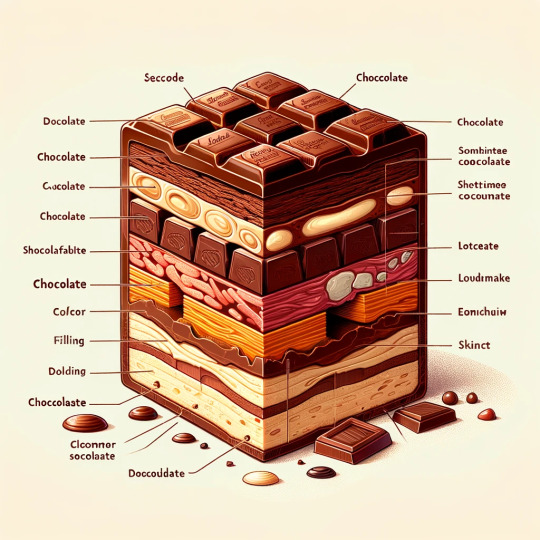
asked chatgpt4 to have dalle3 generate "a cross section of a gourmet chocolate with each layer labeled."
more
#ai generated#dalle3#chatgpt#chocolate#food#candy#cross section#i would have liked the labels to be more reassuring than this#i would have blamed chatgpt for interjecting a long list of fillings that dalle3 then tried to include#but in this case chatgpt had only suggested “chocolate coating” and “a creamy filling”
1K notes
·
View notes
Text
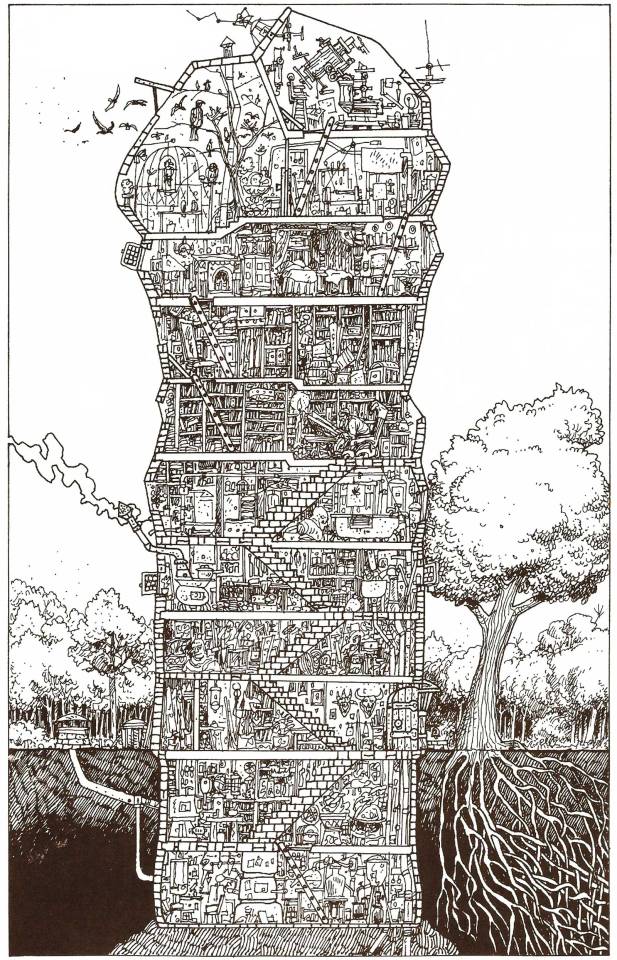
Yaztromo's Tower, in Darkwood Forest (Russ Nicholson, Titan: The Fighting Fantasy World, by Steve Jackson and Ian Livingstone, Puffin Books, 1986)
#Fighting Fantasy#Russ Nicholson#Titan: The Fighting Fantasy World#dungeon cross section#fantasy art#wizard's tower#fantasy forest#fantasy tower#tower#cross section#Steve Jackson#Steve Jackson UK#Ian Livingstone
1K notes
·
View notes
Text
Hey HEY guess WHAT I'm making a podcast series about the Franklin Expedition!

#franklin expedition#amc the terror#terror blogging#putting this in my terror tags because the cross section of fandom and academia lives there
234 notes
·
View notes
Photo


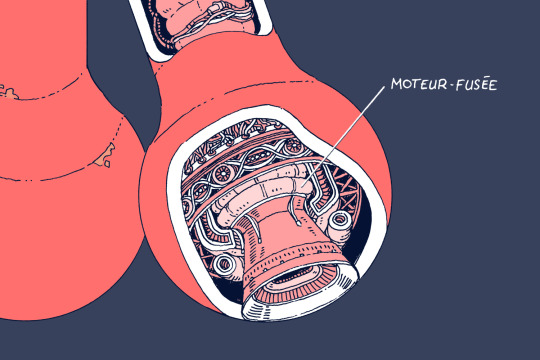


Cutaway of the NAFAL spaceship Allium.
***Buy it as a print here***
125 notes
·
View notes
Text

Hussein Chalayan: 'Micro Geography' (2009)
A Cross-Section was an installation consisting of a glass observation box with a rotating human figure in the centre, dressed in one of Chalayan's designs.
467 notes
·
View notes
Text
DP x DC Portal Collider
STAR labs has been abandoned for a long time, the particle collider was shut down after a series of system failures causing serious damage to the area.
Three years after its permanent closure, scans showed a spike in radiation coming off the previously defunct partial collider. It's assumed that something broke or reactivated and so the area is evacuated and the more durable members of the Justice League are called to come in and shut it down.
But in the center of the mess, they find a young adult with black hair and glowing green eyes frantically trying to keep the systems and monitors in check as inside a ring shaped section of the collider that had been jerry-rigged to the electrical wiring of the lab, a glowing green portal sputtered to life.
#dp x dc#dc x dp#dpxdc#dcxdp#danny phantom#justice league#star labs#the JL think he's trying to end the world or some shit#but Danny's just trying to get home before Jazz goes ballistic looking for him#in case it wasnt clear he took a cross section chunk of the particle collider and turned that into his portal
735 notes
·
View notes
Text
it's so funny to me that they want to use tumblr posts to train ai when this is the piss on the poor grink goncharov omegaverse vanilla extract website
#whatever the ai learns will be so far from a representative cross-section of humanity#and that's kind of amazing
333 notes
·
View notes
Text

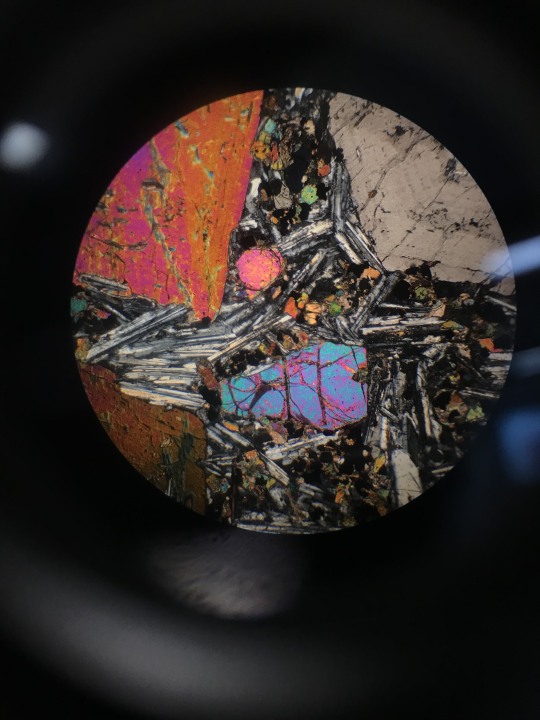
two pretty views on gabbro thin section in crossed polarised light
#hiyutekivigil#personal#rocks#gobbro#thin section#cpl#crossed polarised light#microscope#earth science#geology#university#studyblr#study inspo#academia#academia aesthetic#stem#stem academia#igneous rock#volcanoes
413 notes
·
View notes
Text
HAPPY BIRTHDAY !

omg 2 years already!!
(and two days :/ i forgor)
but i did get some cake this year :)
look at the difference one year makes

450 hours of work in these 2 years (@_@)
#maybe it looks a bit less than i actually did#cus i redid a big section#happy 2 year anniversary#full picture#botw tapestry#cross stitch#embroidery#botw#breath of the wild#legend of zelda
301 notes
·
View notes